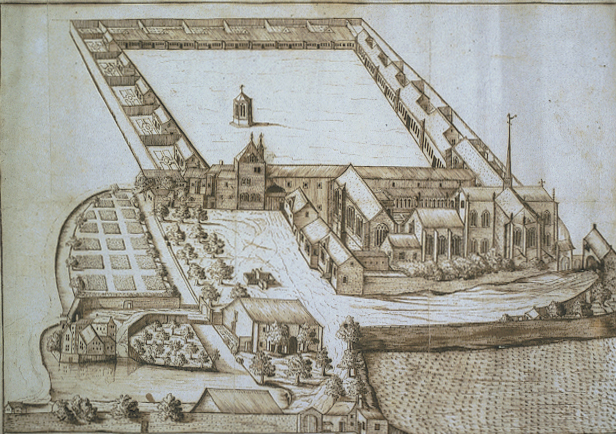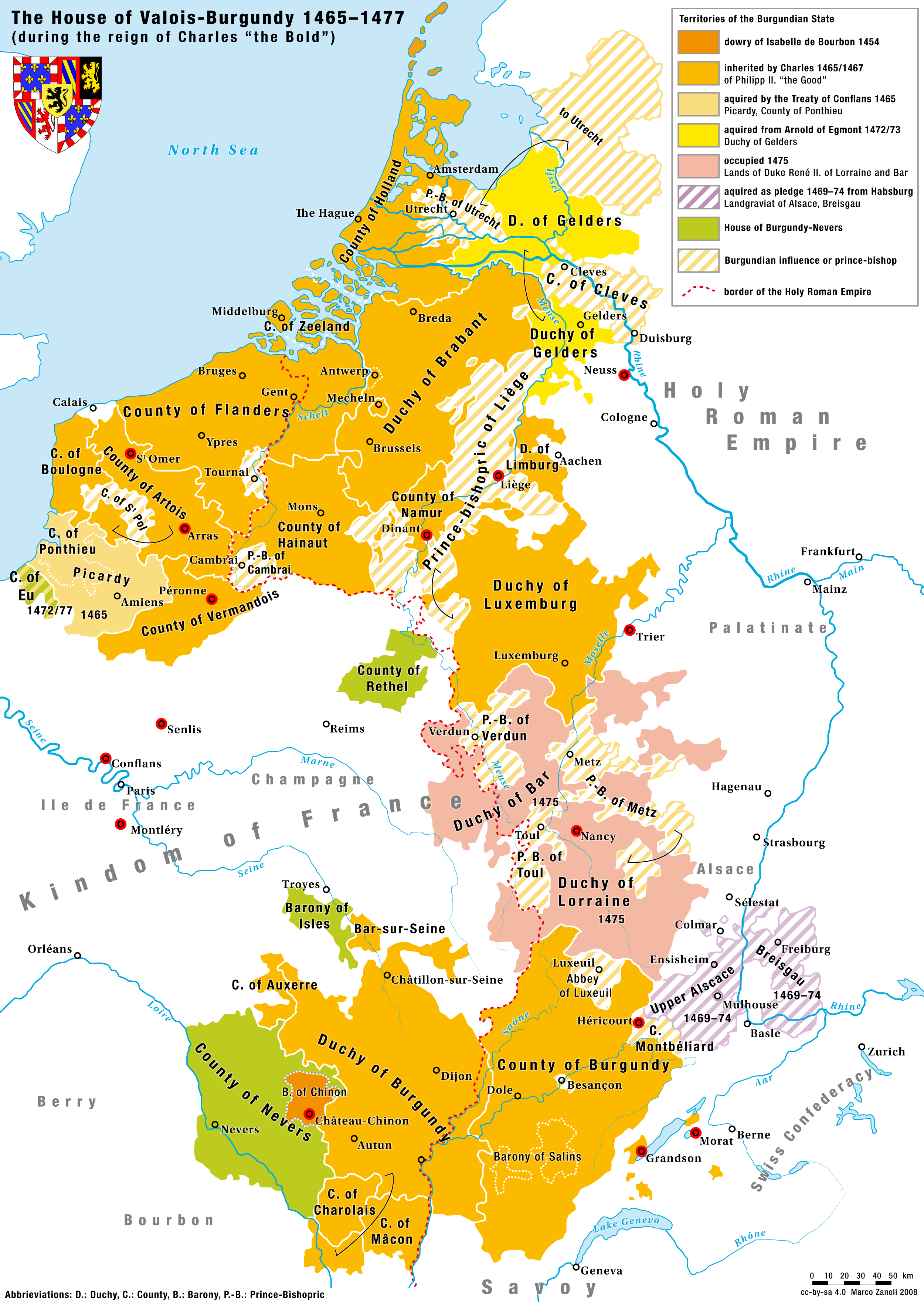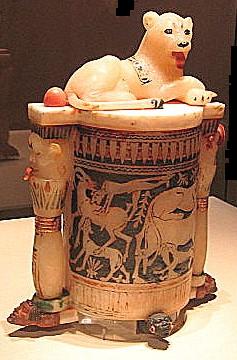|
Champmol
The Chartreuse de Champmol, formally the ''Chartreuse de la Sainte-Trinité de Champmol'', was a Carthusian monastery on the outskirts of Dijon, which is now in France, but in the 15th century was the capital of the Duchy of Burgundy. The monastery was founded in 1383 by Duke Philip the Bold to provide a dynastic burial place for the House of Valois, Valois Dukes of Burgundy#House of Valois .281361-1482.29, Dukes of Burgundy,Vaughan, 202 and operated until it was dissolved in 1791, during the French Revolution. Called "the grandest project in a reign renowned for extravagance", it was lavishly enriched with works of art, and the dispersed remnants of its collection remain key to the understanding of the art of the period. Founding Purchase of the land and quarrying of materials began in 1377, but construction did not begin until 1383, [...More Info...] [...Related Items...] OR: [Wikipedia] [Google] [Baidu] |
Well Of Moses
The Well of Moses (French: ''Puits de Moïse'') is a monumental sculpture recognised as the masterpiece of the Dutch artist Claus Sluter (1340–1405–06), assisted by his nephew Claus de Werve. It was executed by Sluter and his workshop in 1395–1403 for the Carthusian monastery of Chartreuse de Champmol built as a burial site by the Burgundian Duke Philip the Bold just outside the Burgundian capital of Dijon, now in France. Creation The work was executed for Philip the Bold in a style combining the elegance of International Gothic with a northern realism, but with a monumental quality unusual in either. It was carved from stone quarried in Asnières, near Dijon, and consisted of a large crucifixion scene or "Calvary", with a tall slender cross surmounting a hexagonal base which was surrounded by the figures of the six prophets who had foreseen the death of Christ on the Cross (Moses, David, Jeremiah, Zachariah, Daniel and Isaiah). Standing on slender colonnette ... [...More Info...] [...Related Items...] OR: [Wikipedia] [Google] [Baidu] |
Philip The Bold
Philip II the Bold (; ; 17 January 1342 – 27 April 1404) was Duke of Burgundy and ''jure uxoris'' Count of Flanders, Artois and Burgundy. He was the fourth and youngest son of King John II of France and Bonne of Luxembourg. Philip was the founder of the Burgundian branch of the House of Valois. His vast collection of territories made him the undisputed premier peer of the Kingdom of France and made his successors formidable subjects, and later rivals, of the kings of France. Philip played an important role in the development of gunpowder artillery in European warfare, making extensive and successful use of it in his military campaigns. By political marriage, from 1384 Philip gained control over Flanders, one of the most wealthy provinces of Europe in that time. He and his successors ruled it until 1482. This period is referred to as the Burgundian Netherlands. Early life Philip was born in Pontoise in 1342 to John and Bonne of Luxembourg. His father, John, was the ... [...More Info...] [...Related Items...] OR: [Wikipedia] [Google] [Baidu] |
Mourners Of Dijon
The Mourners of Dijon ( pleurants of Dijon) are tomb sculptures made in Burgundy during the late fourteenth and early fifteenth centuries. They are part of a new iconographical tradition led by Claus Sluter that continued until the end of the fifteenth century. In this tradition, free-standing sculptures depict mourners who stand next to a bier or platform that holds a body in state. The figures are cloaked in robes which mostly hide their faces. The Dutch historian Johan Huizinga described the tomb as the "most profound expression of mourning known in art, a funeral march in stone."Johnson, Ken.At the Met, Portraits of Grief, Written in Stone. ''New York Times'', 12 May 2010 The pleurants were commissioned to resemble those in the Tomb of Philip the Bold. Description The mourners stand sixteen inches high and originally occupied niches around the tomb of Philip the Bold (1342-1404), the first Duke of Burgundy, his son, John the Fearless (1371-1419), the second Duke of Burgu ... [...More Info...] [...Related Items...] OR: [Wikipedia] [Google] [Baidu] |
Charles The Bold
Charles Martin (10 November 1433 – 5 January 1477), called the Bold, was the last duke of Burgundy from the House of Valois-Burgundy, ruling from 1467 to 1477. He was the only surviving legitimate son of Philip the Good and his third wife, Isabella of Portugal. As heir and as ruler, Charles vied for power and influence with rivals such as his overlord, King Louis XI of France. In 1465 Charles led a successful revolt of Louis's vassals in the War of the Public Weal. After becoming the Duke of Burgundy in 1467, Charles pursued his ambitions for a kingdom, independent from France, that would stretch contiguously from the North Sea in the north to the borders of Savoy in the south. For this purpose, he acquired Guelders and Upper Alsace; sought the title King of the Romans; and gradually became an enemy of the Germans. Charles married Margaret of York for an English alliance. He arranged the betrothal between his sole child, Mary, with Maximilian of Austria. A passiona ... [...More Info...] [...Related Items...] OR: [Wikipedia] [Google] [Baidu] |
Smarthistory
Smarthistory is a free resource for the study of art history created by art historians Beth Harris and Steven Zucker. Smarthistory is an independent not-for-profit organization and the official partner of the Khan Academy for art history. It is funded by the National Endowment for the Humanities. History Smarthistory started in 2005 as an audio guide series for use at the Metropolitan Museum of Art, The Museum of Modern Art in New York City, and as a resource for students taking introductory art history courses at the college level. In addition to its focus on college-level courses in art history, Smarthistory supports the art history Advanced Placement course and examination developed by The College Board. Smarthistory provides essays, videos, photographs, and links to additional resources for all of the art and architecture that make up the AP art history curriculum. Smarthistory has published more than 880 videos and 2,000 essays on art and cultural history from the Paleo ... [...More Info...] [...Related Items...] OR: [Wikipedia] [Google] [Baidu] |
Tracery
Tracery is an architectural device by which windows (or screens, panels, and vaults) are divided into sections of various proportions by stone ''bars'' or ''ribs'' of moulding. Most commonly, it refers to the stonework elements that support the glass in a window. The purpose of the device is practical as well as decorative, because the increasingly large windows of Gothic buildings needed maximum support against the wind. The term probably derives from the tracing floors on which the complex patterns of windows were laid out in late Gothic architecture. Tracery can be found on the exterior of buildings as well as the interior. There are two main types: plate tracery and the later bar tracery. Honour, H. and J. Fleming, (2009) ''A World History of Art''. 7th edn. London: Laurence King Publishing, p. 948. The evolving style from Romanesque to Gothic architecture and changing features, such as the thinning of lateral walls and enlarging of windows, led to the innovation of trace ... [...More Info...] [...Related Items...] OR: [Wikipedia] [Google] [Baidu] |
Alabaster
Alabaster is a mineral and a soft Rock (geology), rock used for carvings and as a source of plaster powder. Archaeologists, geologists, and the stone industry have different definitions for the word ''alabaster''. In archaeology, the term ''alabaster'' includes objects and artefacts made from two different minerals: (i) the fine-grained, massive type of gypsum, and (ii) the fine-grained, banded type of calcite.''More About Alabaster and Travertine'': Brief Guide explains the different definitions used by geologists, archaeologists, and the stone trade. Oxford University Museum of Natural History, 2012/ref> Chemically, gypsum is a Water of crystallization, hydrous sulfate of calcium, whereas calcite is a carbonate of calcium. As types of alabaster, gypsum and calcite have similar properties, such as light color, translucence, and soft stones that can be sculpture, carved and sculpted; thus the historical use and application of alabaster for the production of carved, decorative art ... [...More Info...] [...Related Items...] OR: [Wikipedia] [Google] [Baidu] |
Early Modern Period
The early modern period is a Periodization, historical period that is defined either as part of or as immediately preceding the modern period, with divisions based primarily on the history of Europe and the broader concept of modernity. There is no exact date that marks the beginning or end of the period and its extent may vary depending on the area of history being studied. In general, the early modern period is considered to have lasted from around the start of the 16th century to the start of the 19th century (about 1500–1800). In a European context, it is defined as the period following the Middle Ages and preceding the advent of modernity; but the dates of these boundaries are far from universally agreed. In the context of World history (field), global history, the early modern period is often used even in contexts where there is no equivalent "medieval" period. Various events and historical transitions have been proposed as the start of the early modern period, including ... [...More Info...] [...Related Items...] OR: [Wikipedia] [Google] [Baidu] |
Court Painter
A court painter was an artist who painted for the members of a royal or princely family, sometimes on a fixed salary and on an exclusive basis where the artist was not supposed to undertake other work. Painters were the most common, but the court artist might also be a court sculptor. In Western Europe, the role began to emerge in the mid-13th century. By the Renaissance, portraits, mainly of the family, made up an increasingly large part of their commissions, and in the early modern period one person might be appointed solely to do portraits, and another for other work, such as decorating new buildings. Especially in the Late Middle Ages, they were often given the office of valet de chambre. Usually they were given a salary and formal title, and often a pension for life, though arrangements were highly variable. But often the artist was paid only a retainer, and paid additionally for works he or, less often, she produced for the monarch. For the artist, a court appointment h ... [...More Info...] [...Related Items...] OR: [Wikipedia] [Google] [Baidu] |
Oratory (worship)
In the canon law of the Catholic Church, an oratory is a place which is set aside by permission of an ordinary for divine worship, for the convenience of some community or group of the faithful who assemble there, but to which other members of the faithful may have access with the consent of the competent superior. The word ''oratory'' comes from the Latin verb ''orare'', to pray. History Oratories seem to have been developed in chapels built at the shrines of martyrs, for the faithful to assemble and pray on the spot. The oldest extant oratory is the Archiepiscopal Chapel in Ravenna (). The term is often used for very small structures surviving from the first millennium, especially in areas where the monasticism of Celtic Christianity was dominant; in these cases it may represent an archaeological guess as to function, in the absence of better evidence. Public, semi-public, private Previously, canon law distinguished several types of oratories: private (with use restricted to ... [...More Info...] [...Related Items...] OR: [Wikipedia] [Google] [Baidu] |
Indulgence
In the teaching of the Catholic Church, an indulgence (, from , 'permit') is "a way to reduce the amount of punishment one has to undergo for (forgiven) sins". The ''Catechism of the Catholic Church'' describes an indulgence as "a remission before God of the temporal punishment due to sins whose guilt has already been forgiven, which the faithful Christian who is duly disposed gains under certain prescribed conditions…" The recipient of an indulgence must perform an action to receive it. This is most often the saying (once, or many times) of a specified prayer, but may also include a pilgrimage, the visiting of a particular place (such as a shrine, Church (building), church, or cemetery), or the performance of specific good works. Indulgences were introduced to allow for the remission of the severe penances of the early church and granted at the intercession of Christians awaiting martyrdom or at least imprisoned for the faith.Cross, F. L., ed. ''The Oxford Dictionary of the ... [...More Info...] [...Related Items...] OR: [Wikipedia] [Google] [Baidu] |








